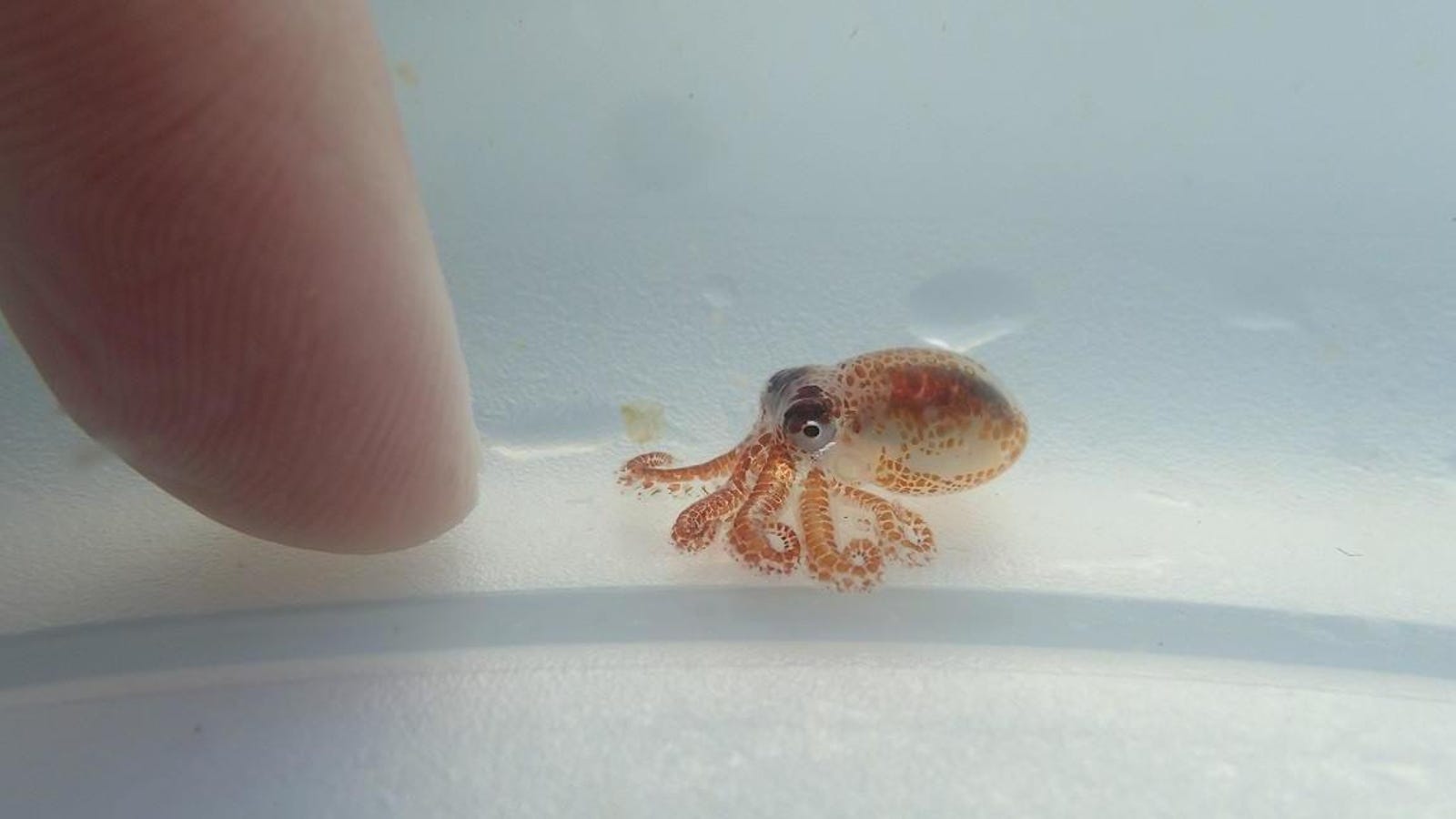
[ad_1]

An image of a pea-sized cephalopod captured by a team of scientists in Hawaii has been making the rounds this week as the result of how cute this tiny squish appears at first glance. But make no mistake, even a baby octopus can be a cold-hearted killer—and there’s photographic evidence to prove it.
The image of the teeny octopus—one of a couple discovered by the team—were shared by the Kaloko-Honokōhau National Historical Park in August but were posted to Instagram by the U.S. Department of the Interior this week. As one of them was photographed next to a woman’s index finger, it’s immediately apparent how impossibly tiny these octopus babies really are.
Marine ecologist Sallie Beavers of Kaloko-Honokōhau told Earther by email that her team came across the two planktonic-stage octopuses while picking up floating debris during a surface break from their coral reef surveying. She said the tiny cephalopods were likely either Octopus cyanea (sometimes referred to as the “day octopus”) or Octopus ornatus (sometimes referred to as the “night octopus”), though the team couldn’t be sure of the species.
“We photographed the octopus and then took it down onto the reef (in a small container) to release it in a small coral crevice on our next dive,” she said. “We found a second one with more marine debris later in the day and did the same. Because we were effectively removing their shelter by collecting the trash, we didn’t want to release them at the surface.”
The photos shared to the national park’s Facebook page on August 3 were a hit on social media. But reader, do not be fooled by the apparent sweetness of these tiny creatures. Octopuses are known killers, as evidenced by a photo shared by the park the following day that shows another tentacled invertebrate attacking and killing a baby crab.
“Photo of another baby octopus taken by the dive team (again found on plastic debris) attacking and killing a baby crab,” the park posted August 4. “Maybe they aren’t so cute?”
When asked about the what the images of these octopus babies can tell us about the state of plastic pollution in the area, Beavers told Earther that the amount of plastic waste (including microplastics) that washes ashore in the park has “dramatically increased” in the 17 years she’s worked there.
“Disposable plastic use by humans around the world is reaching a crisis-level for the ocean and its marine species,” Beavers said. “While the floating plastic provides the same temporary shelter for planktonic-stage marine species (baby turtles, octopus, crabs, fish, etc.) that natural floating debris (logs and other plant materials) provide, it is not the appropriate environment for them. Micro-particles of the plastic is likely ingested to some extent by the juvenile-stage animal, and also likely ingested by the fish, seabirds and other predators that are attracted to the marine life that tends to collect around floating objects.”
Beavers said she hopes the images of these little guys “help raise awareness of our global need to curb single-use plastics and to protect the world’s oceans.” She added: “Ocean health is vital to human health.”
[Associated Press]
[ad_2]
Source link